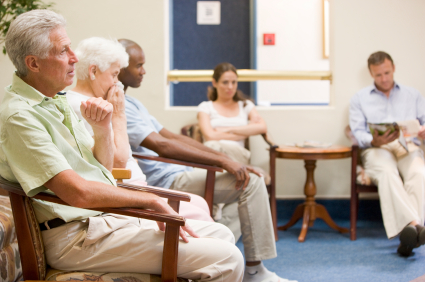Health care reform and aging boomers expected to exacerbate existing doctor shortage

As the nation struggles with a serious doctor shortage, a study recently released by the Association of American Medical Colleges (AAMC) found that health care reform legislation will likely worsen the situation. Prior to health care reform becoming law, projections showed a shortage of nearly 37,000 doctors. However, with 32 million newly covered Americans having access to the health care system by 2014, coupled with millions of baby boomers soon eligible for Medicare, the shortage of doctors will increase 50 percent - to nearly 63,000 - by 2015. The AAMC projects that number to double to 130,000 by 2025.
Specifically, the AAMC projects a shortage of 33,100 physicians in specialties such as cardiology, oncology and emergency medicine in 2015. By 2020, the AAMC projects a shortage of 45,000 primary care physicians and 46,000 surgeons and other medical specialists.
While the number of medical school graduates continues to increase each year, the AAMC says even more are needed to meet the health care demands of an older and sicker population. In fact, the U.S. Census Bureau estimates an increase of 36 percent of people over 65 over the next ten years. Simultaneously, more than one-third of doctors will retire during the next decade.
The AAMC’s findings are not unique. The Health Resources and Services Administration (HRSA) projected that the number of primary care physicians (PCPs) will be adequate until 2020. However, after that point, HRSA expects more than 65,000 too few PCPs.
The chief advocacy officer of the AAMC, Dr. Atul Grover was quoted in the Los Angeles Times saying that:
"This will be the first time since the 1930s that the ratio of physicians to the population will start to decline. The number of people over 65 will double between 2000 and 2030, and the amount of medical services they require is two to three times higher than many other adults. Not only will these individuals seek preventive care, but they will need specialists — cardiologists, urologists, endocrinologists - to deal with issues such as heart disease, diabetes and respiratory problems."
The AAMC is calling for a substantial increase in the percentage of students graduating from medical school to help alleviate the growing problem. But will that be enough? It is not just a shortage of doctors, but shortages in the kind of doctors. Simply put, a PCP or family physician earns considerably less than a student who chooses a specialty, making specialty medicine more attractive to a medical student saddled with tremendous debt. In fact, a Duke University study found that PCPs makes $100,000 less annually than a specialty physician.
As discouraging as this information is, additional options are being explored and enacted to help alleviate the looming shortage. Telemedicine (accessing doctors through audio-visual equipment) is becoming more available and could be particularly useful for underserved populations where doctors are scarce. Moreover, nurse practitioners and physician assistants can provide preventative routine care that is currently provided by PCPs. Currently, 28 states are considering expanding the duties nurse practitioners, and health care reform invests heavily into expanding nurse practitioners’ work.
Specifically, health care reform:
· Allocates $50 million to nurse-managed health clinics providing primary care to low-income individuals
· Allocates $50 million annually from 2012 to 2015 for hospitals to train nurses with advanced degrees on how to care for Medicare beneficiaries
· Boosts nurse midwives' Medicare reimbursement to the physician level
· Provides 10% Medicare bonuses to primary care providers, including nurse practitioners, who practice in areas with few physicians.
Whether the physician shortage becomes a reality remains to be seen. That said, seeking alternative ways to care for people’s health care needs is a step in the right direction.






